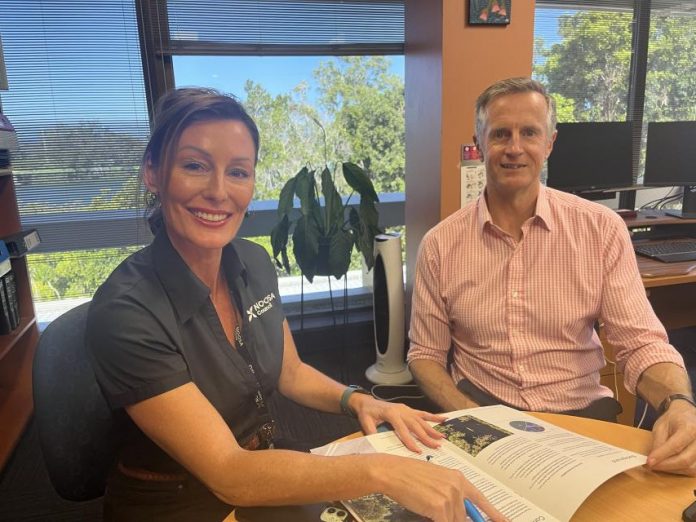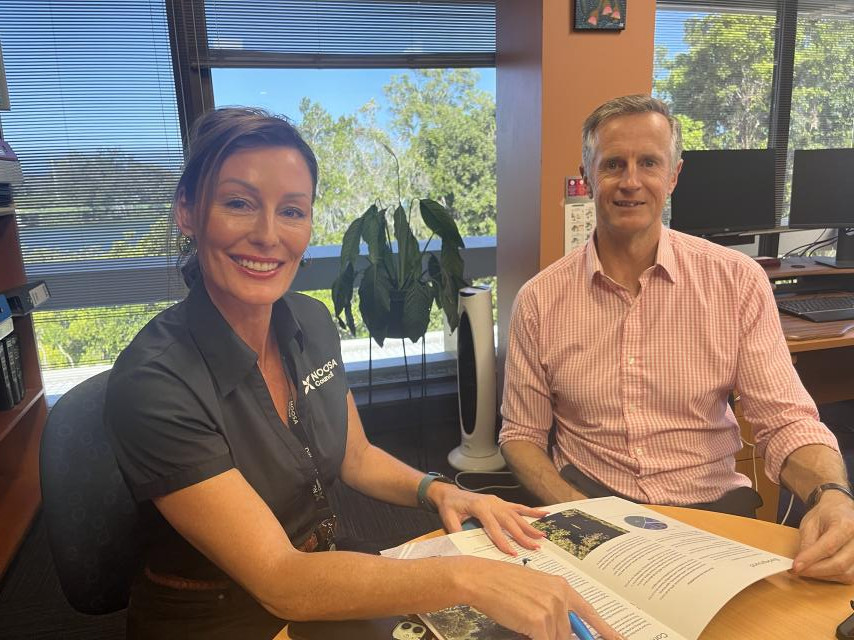It seems like a lifetime ago but in fact it’s only five years since then-mayor Tony Wellington burst the bubble of Noosa’s rapidly escalating tourism boom by boldly declaring that our town was in danger of being “loved to death”.
Mayor Wellington didn’t coin the phrase – it had been used many times in reference to overcrowded tourist meccas like Waikiki and Venice – but his grim warning not only resonated across the community but also polarised it, with the tourism industry, its workers, boosters and investors on one side and the lifestyle-loving sea-changers on the other. The erudite Wellington made the headlines when he told a Noosa Parks Association forum that the then tourism level was not sustainable, but he concluded hopefully: “My vision for 10 years from now is to have a Noosa where people can move around freely and in which the lifestyle, the living amenity of residents is maintained and not compromised.”
The following year, 2019, when tourist numbers and revenue had not only increased but reached record levels, Cr Wellington warned a Regional Cooperation and Development Forum that Noosa was bracing for a “building tsunami of day trippers”. He said: “There are residents who are increasingly frustrated by the traffic congestion, the crowds and the difficulty of getting access to key locations within their own shire. And if we leave that unchecked, that resentment will continue to grow.”
The day tripper tsunami would come “with the south east corner of Queensland expected to balloon by almost two million more people by 2041 and the Sunshine coast expecting growth of 200,000.”
Of course Covid intervened and changed the way we thought about a lot of things, including how much we loved our own backyard, but roll on to late 2023 and last week, we find Noosa Council unveiling the first of a series of community workshops canvassing many of the same ideas, this time emanating from a brand new Destination Management Plan discussion paper, as part of a broad community consultation which concludes at the end of this month. But the difference now is that the consultation is being conducted under the black cloud of the State government’s proposed South East Queensland Plan, which threatens to unleash population growth on a scale way beyond what Tony Wellington was concerned about.
And regardless of whether Noosa is able to withstand State pressure to accept growth levels more than twice what the Noosa Plan considers acceptable carrying capacity, there is nothing the shire can do about the growth of our neighbouring local government areas. Think a “tsunami” of monumental proportions every weekend.
Despite such dire threats to the Noosa we know and love, Council’s Destination Management Plan architects, working with an expert project control group and a larger external community advisory panel, have taken a positive outlook into the preparation of the discussion paper, subtitled “Growing Well Together”. The 24-page document is in two parts. The first outlines Noosa’s tourism history, the reasons for its phenomenal success and its current community values and response to tourism, acknowledging its impact on community by noting: “This is not a new challenge we are facing; this is also not a pro or anti tourism issue; this is about ensuring we continue to manage Noosa Shire’s success and maintain the balance as an iconic destination and a great place to live.”
The second part invites community engagement, presenting a “series of fact-based opportunities and issues outlining what is being experienced in Noosa Shire today, what initiatives Council currently has in place and is planning, and a range of examples Council could adopt based on community feedback”. Four “scenarios” are presented – do nothing, steady state (current strategy), aspirational (gradual change) and transformational (profound change) – designed to test the level of change the community desires.
The last two scenarios feature the most radical proposals.
They include paid parking for visitors in Noosa’s main Hastings Street, Noosa Parade and Gympie Terrace during peak periods.
A transformational suggestion from the council was to make access to Noosa National Park along Park Road accessible only by a free bus during peak periods.
While there are virtually no ideas that haven’t been canvassed previously, either within the scenarios or anywhere else in the discussion paper, early media response has jumped on ideas like paid parking, booking for national park visits and bus access only to the Headland section of the national park, peak times pedestrians only on Hastings Street, and one-way traffic flow as examples of fundamental changes to the Noosa lifestyle under consideration. In fact, the paper represents an even-handed, intelligent approach to drawing out community opinion on how our Noosa future is to be shaped.
Noosa Today sat down with one of the authors of the paper, Andrew Saunders, and Council’s community engagement adviser Caroline Osborne on the eve of the project’s first workshop, to drill a bit deeper into the aims and aspirations of the Destination Management Plan.
Noosa Today: Reading the discussion paper, it seems to me there’s been a quantum leap since the idea of a DMP was first bandied around by Tourism Noosa when it was all about protecting the “visitor experience” and the “Noosa brand”. Are we more interested in protecting the community now?
Andrew Saunders: There’s a couple of things to unpack there. One is that Tourism Noosa is the destination manager for the visitor, not the whole community. Council is the destination manager for the community in all its facets.
Caroline Osborne: What I’m hearing is that tourism was very much driven from the perspective of the industry at that time, but we were given a clear understanding from the project control group and the external reference group that our tourism future needs to come from a community understanding in terms of balancing their wants and needs. That’s been reinforced by our liveability study and other input that suggests a movement away from a branding focus.
Andrew: In Noosa, as in many destinations post-Covid, there has been a rethink on the visitor economy and its impacts, largely because communities had the opportunity to rediscover their destination without the visitor. Council here became aware of a shift in community sentiment against the level of visitation, which because of interstate lockdowns over Covid added greatly to traffic congestion and general overcrowding. So with the DMP, project manager Lynne Banford and I have flipped it from when it would typically have been written by the destination marketing organisation to making it a community-led document.
NT: That’s a hell of a balancing act.
Caroline: And that’s why community engagement is so important.
Andrew: For a DMP to have the desired effect, we need the community to lead the behavioural change. We need residents to feel that they are having a direct impact on what is decided.
NT: A year ago, after the composition of the project control group was announced, Cr Lorentson wrote: “It is important that our community welcomes visitors and supports tourism.” Is that still the position, or can the community decide that it doesn’t want to support tourism growth?
Andrew: There’s a quote from (psychologist and strategist) Anna Pollock: “It’s not necessarily about less or more, but about what more is.” So we aren’t really about fewer people, but more people with values in line with the values of the shire. Not so much “value over volume” but “values over volume”.
NT: I was intrigued by the structure of this operation, with a small expert advisory group on the one hand and a much larger external advisory group. How did that work in practice?
Andrew: To get it right there needs to be a huge level of engagement, so it was a natural process to ask the community to put in expressions of interest if they could contribute. From that we chose those with expertise in the areas we needed to be in the control group, but there was also a depth of knowledge right through the applicants, so we decided to invite them to be part of the process too, and they became the community lens.
NT: So were they the guinea pigs for the consultation that’s happening now?
Andrew: To a degree. We certainly made changes to the paper and to the engagement process based on our meetings with them.
NT: And did that mean that you went into the consultation process knowing what the community sentiments were?
Andrew: Well, we knew what the issues were and the pathways to solutions, but we still have to hear it from the community. We’re very strong on that.
Caroline: We haven’t gone out and asked people specifically about the DMP, more about what they want as a community, and from the coffee chats so far, I’m hearing an affirmation of what we saw in the liveability survey. The “different by nature” philosophy is really important to them for the destination going forward. The challenge for us is what that looks like to manage.
Andrew: It’s interesting to see how aware people are of the SEQ Plan and many have spoken out about that and the need to be strong against the push from the State and protect what we have.
NT: From a tourism perspective, even if we win for the shire we still have a day tripper problem being multiplied.
Andrew: That’s right. We might win the fight to keep the Noosa plan but down the road they’ll be building high-rises from which people will drive up here on a Sunday.
NT: What can be done?
Andrew: Well, we’re not interested in building multi-storey car parks, we’re not interested in making it easier for the day tripper to come here and park. If they’re going to come we’d like it to be on our terms where they park and ride, catching public transport in so that their impact is lessened. From an industry perspective the drive market is seen as being less attractive because of its lower spend, but the fact is that the community doesn’t care whether they’re internationals or interstaters or day trippers, they’re still here! But there is no doubt that the SEQ Plan is going to make it very challenging and complex for all of us.
In next week’s conclusion to Surviving the tourist tsunami, we examine the DMP scenarios for change. If you want your voice heard, visit yoursay.noosa.qld.gov.au or email mail@noosa.qld.gov.au










